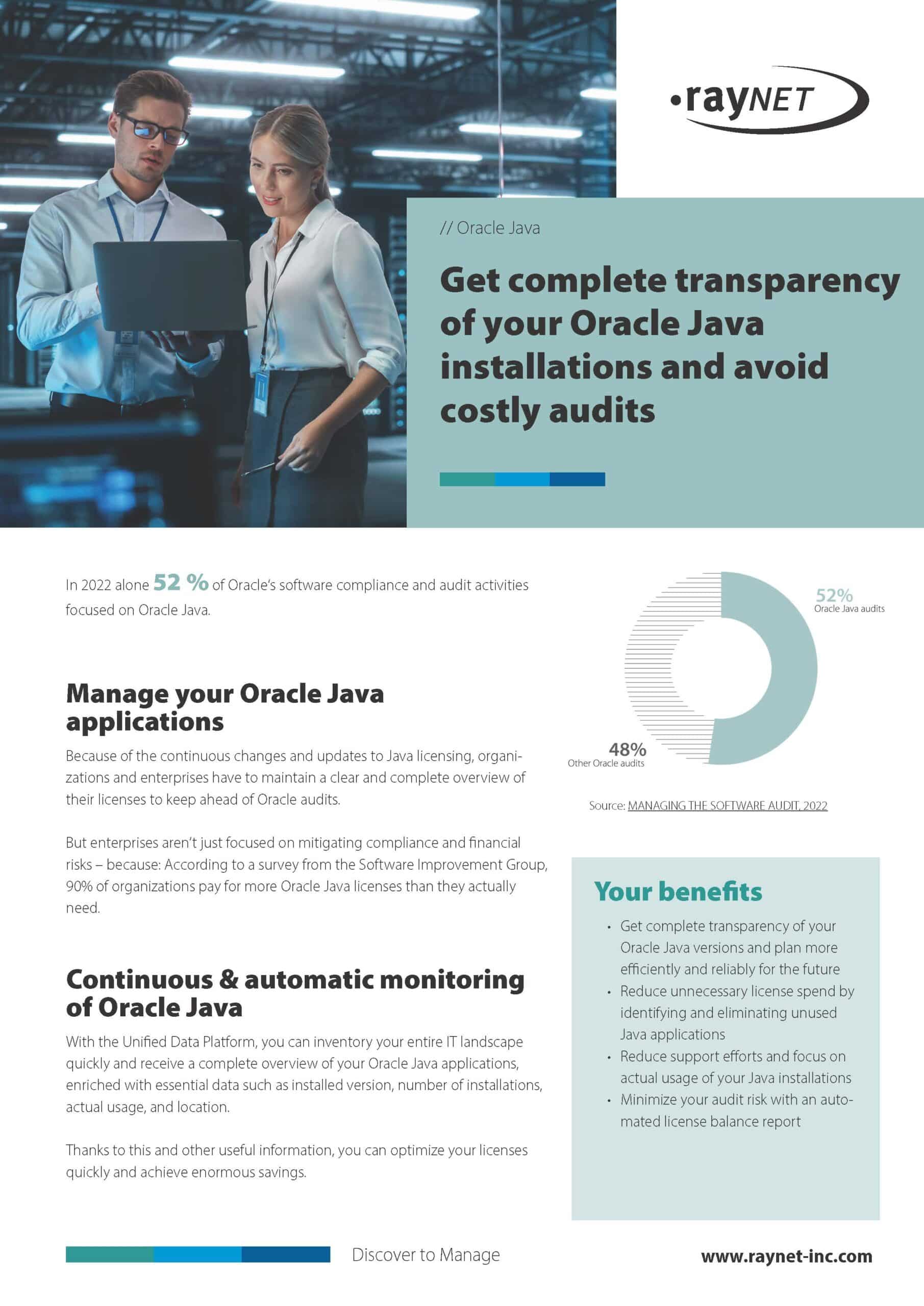Reading time: 4 minutes
Date: February 14th, 2023
Oracle Java licensing has gotten more expensive and even more complex. It’s been hard to follow the growing catalog of changes to the price list, and the trend has been especially concerning for small to midsized enterprises, 83% of which, according to research published in September, reported audits in 2022.
Not all Oracle Java installations require licenses, and some of them only require licenses when they are part of a commercial offering. Java 6 and Java 7 remain free, but neither of them receives public updates. Java 8, however, requires a license, but customers may not know if they have Java 8 or whether they are adequately licensed. With licensing requirements changing with almost each subsequent edition, it’s hard to get an overview of the costs and requirements, let alone the situation in your own environment.
The first challenge most organizations will face is knowing which versions of Oracle Java they have installed, how many they have installed, and whether those installations need licenses. Only with that visibility can organizations understand their compliance situation, remediate licensing issues, and prepare themselves for audits.
A recent research note from the global technology consulting company, Gartner, says that “According to Gartner client interactions, Oracle actively targets organizations – both existing Oracle customers and those with no Oracle products – on Java compliance, and deploys its global Java licensing team to enforce compliance.” The report adds that “52% of the Oracle software compliance and audit-related interactions focused on Oracle Java.”
Get complete transparency of your Oracle Java installations and avoid costly audits
Many organizations are facing the challenge of getting a complete overview of their Oracle Java installations and the transparency they need for upcoming audits.
In 2022 alone, 52% of Oracle’s software compliance activities concentrated on Oracle Java, and experts predict that this trend will continue to increase in 2023.
Because of the changes in Oracle Java licensing, organizations have to get a clear and complete overview of where and how Java is installed in order to best prepare for audits or to make strategic licensing decisions.
Simplify Oracle Java licensing complexity
Oracle is on the lookout for Java compliance issues, so it’s in your best interest to figure out what you have before Oracle comes knocking at your door. A full overview of your Java installations allows you to get your licensing house in order to avoid any unplanned fees and penalties and to protect yourself from unnecessary and costly licensing upgrades.
The first step is a simple scan of your infrastructure. The scan automatically generates inventory files that showing which and how many technical versions of Oracle Java you have in your infrastructure.
The next step is even easier. Send the data to us, and we’ll run it through Raynet One Data Hub. Utilizing our world-class catalog of technology and commercial data, we can enrich your inventory data to let you know which of your installed Java versions need to be licensed.
It’s that simple.
With this visibility, you can start the process of ensuring compliance before Oracle comes calling. This can help you save valuable spend and resources in the long term.
Author:

Senior Product and Marketing Manager
Related links:
Share this blog post:

